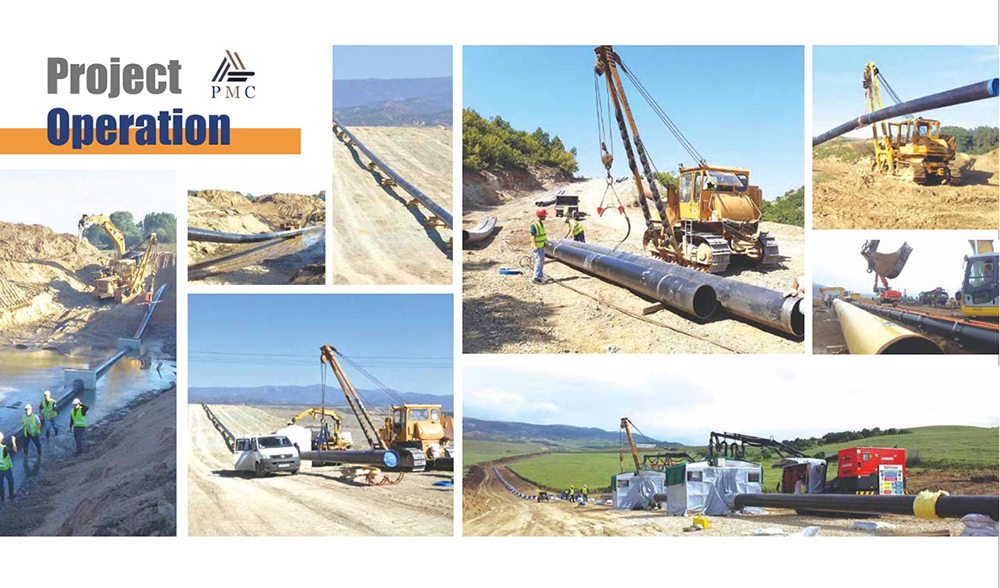Differences between ASTM A53 and ASTM A106 steel pipe.

ASTM A53 specification covers the steel pipe manufacturing types in seamless and welded, material in carbon steel, black steel. Surface natural, black, and hot-dipped galvanized, zinc coated steel pipe. Diameters range from NPS 1 ⁄ 8 to NPS 26 (10.3mm to 660mm), nominal wall thickness.
ASTM A106 standard specification covers the seamless carbon steel pipe, applied for high-temperature services.
Different types and grades for both standard:
For ASTM A53 there are ERW and seamless steel pipes Type F, E, S covers Grade A and B. A53 Type F, furnace butt welded, continuous weld Grade A
A53 Type E, Electric resistance welded (ERW pipe), in Grade A and Grade B. A53 Type S, Seamless steel pipe, in Grade A and Grade B.
If raw steel material of different grades in process of continuously casting, the transition material result shall be identified. And the manufacturer should remove the transition material with the processes that could separate the grades positively.
In case ASTM A53 Grade B in ERW (electric resistance welded) pipe, the weld seam shall be done the heat treatment with a minimum 1000 ° F [540 ° C]. In this way the no untempered martensite remains.
In case ASTM A53 B pipe in cold expanded, then expansion should not exceed 1.5% of the required OD.
(Please note the type F is not used for flanging, and if type S or type E is applied for coiling or cold bending, it is recommended to use ASTM A106 Grade A pipe. Although, it is not prohibit to use ASTM A106 Grade B for the cold bending and coiling. According the facility from the manufacturer, type E of ASTM A53 pipe could be supplied non cold expanded or cold expand steel pipe.)
For ASTM A106 steel pipe, manufacturing Type only in seamless, processes hot rolled and the cold drawn. Grade in A, B and C.
ASTM A106 Grade A: Maximum Carbon element 0.25%, Mn 0.27-0.93%. Minimum tensile strength 48000 Psi or 330 Mpa, yield strength 30000 Psi or 205 Mpa.
A106 Grade B: Maximum C below 0.30%, Mn 0.29-1.06%. Minimum tensile strength 60000 Psi or 415 Mpa, yield strength 35000 Psi or 240 Mpa.
Grade C: Maximum C 0.35%, Mn 0.29-1.06%. Minimum tensile strength 70000 Psi or 485 Mpa, yield strength 40000 Psi or 275 Mpa.
As ASTM A106 B is the common use, the chemical here we listed is C≤0.3%, Mn 0.29-1.06%, P≤ 0.035, S≤0.035%, Si>0.1, Cr≤0.40, Cu≤0.40, Ni≤0.40, Mo≤0.40, V≤0.08.
Differently with ASTM A53 B, ASTM A106 B has Si min 0.1%, which A53 B has 0, so A106 B have better heat resistance than A53 B, since Si improve the heat resistance.
A106 Grade B has low sulfur and phosphorus than A53 B, this is better. Application areas of both:
Both pipes applied for mechanical and pressure systems, transporting steam, water, gas, and etc.
ASTM A53 pipe application:
ASTM A106 pipe application:
Especially for high temperature services that up to 750°F, and it could substitute ASTM A53 pipe in most of the cases. In some country at least in United States, usually ASTM A53 is for welded pipe while ASTM A106 is for seamless pipe. And if client asked for ASTM A53 they will also offer A106. In China, manufacturer will offer the pipe that comply to three standards ASTM A53 B / ASTM A106 B / API 5L B.
In this episode, I sat down with Beejan Giga, Director | Partner and Caleb Emerson, Senior Results Manager at Carpedia International. We discussed the insights behind their recent Industry Today article, “Thinking Three Moves Ahead” and together we explored how manufacturers can plan more strategically, align with their suppliers, and build the operational discipline needed to support intentional, sustainable growth. It was a conversation packed with practical perspectives on navigating a fast-changing industry landscape.